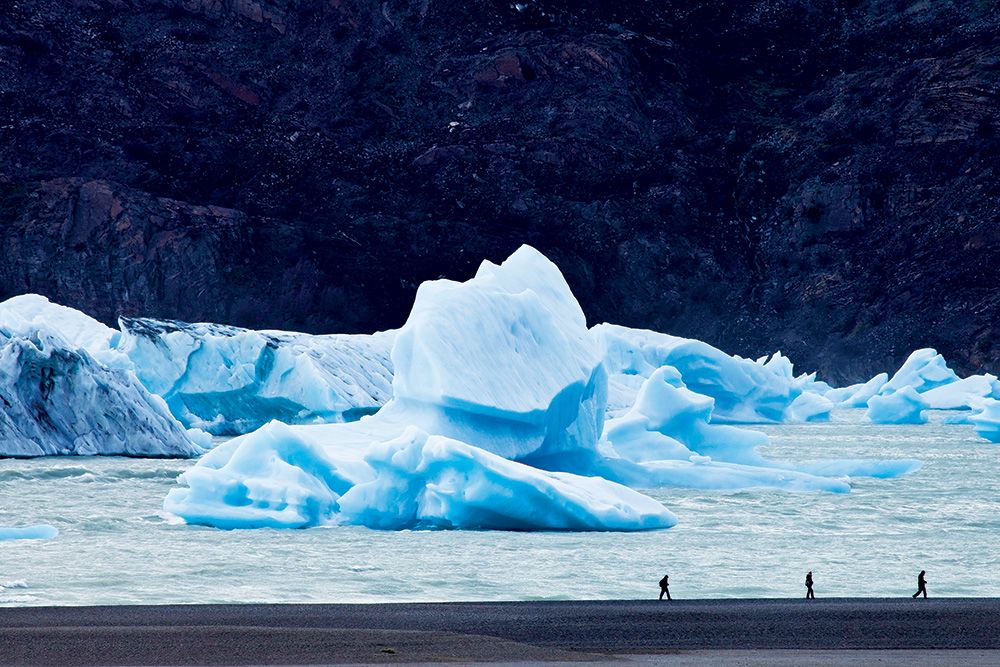
The reality of Patagonia far exceeds the images the name conjures up in the mind.
For the effort it takes to get there, Patagonia delivers an ample reward to the avid traveller. The region is a slice of heaven tucked into the furthest-flung corner of South America, divided between Chile and Argentina, in the extreme south of both countries. Getting there and then getting around it requires a lot of travel. My journey included 38 hours in the air from Hong Kong to Argentina and a six-hour drive that took me into Chile. But to see the beauty of this part of the world, barely touched by human hand, makes the investment of time and money truly worthwhile.
My journey brought me first to El Calafate, a quaint, cosy town in southern Argentina. The brightness of the sun in the cloudless blue sky, the freshness of the crisp air, the purity of the water, and the colours of the lakes, trees and flowers so rich that they almost look fake: all this sets the senses a-tingle in a rejuvenating rush – yes, rejuvenating, even after 38 hours in the air.
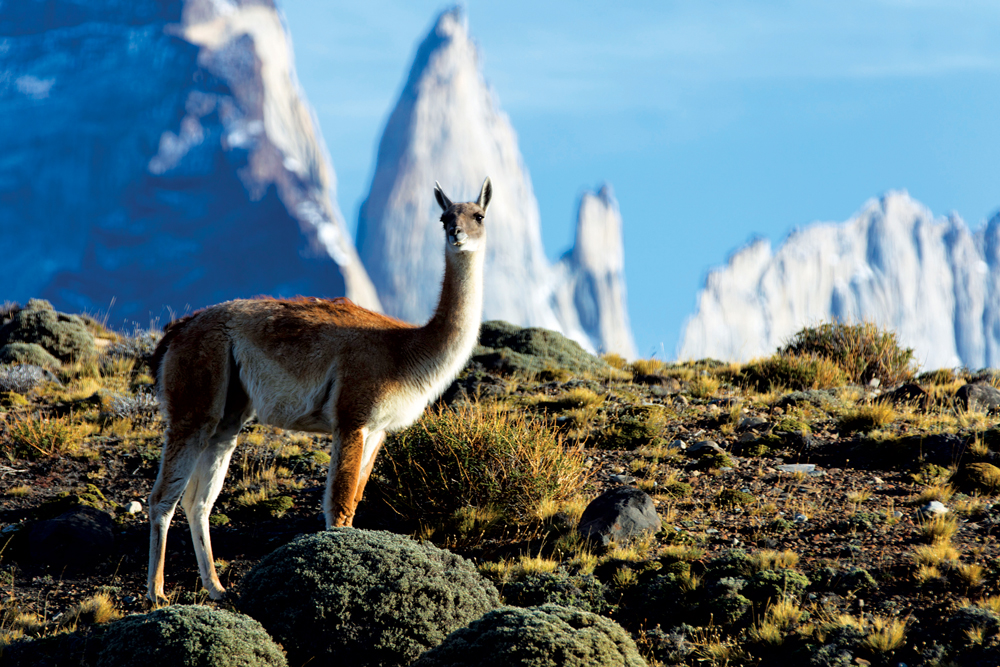
Something strange and wonderful happened to my mind and body as soon as I set foot in Patagonia. I spent my first day exploring the little town, tasting delicious chocolates in the little shops and roaming around the Laguna Nimez Reserve to catch glimpses of the birdlife – which, most spectacularly, includes pink flamingos. In the evening I ate at Don Pichon, a restaurant that looks out over the town and serves delicious fare barbecued in the traditional Argentinian way.
My second day was a big one. I rose early to make the 45-minute journey by road to Los Glaciares National Park. The park is the third-largest reserve for freshwater lilies, found in the lake at the foot of the Perito Moreno Glacier. A short walk along the lakeshore brings within earshot the thunder of huge chunks of ice cracking off the glacier and crashing into the water. A few more steps bring the glacier within sight. It stretches upward and away, further than the eye can see, glimmering in 50 shades of blue.
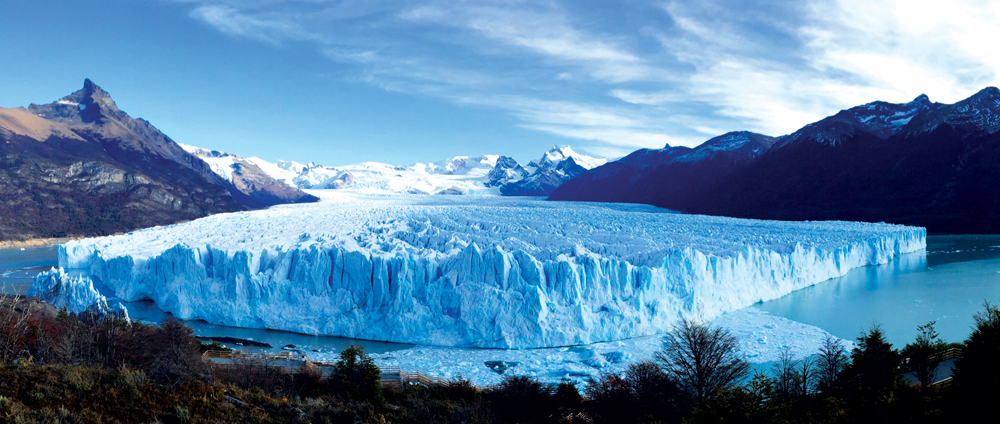
I was reminded of a scene in the movie Interstellar, where massive icebergs split off from an ice field and slowly launch themselves into the water. The closer a boat trip brought me to the foot, the greater my astonishment at the scale, sight and sound of the glacier and the mammoth chunks of ice it calves. The frequency of the calving reminded me of how fragile the ecosystem is. It made me wonder how fast the ice that covers the Arctic and Antarctic must be breaking up, because the Perito Moreno Glacier is the only glacier in the world that is not retreating. The reason that the Perito Moreno Glacier is still flowing strongly is debatable. People living near the glacier believe the reason is that the outfall is a freshwater lake rather than the salty ocean.
In the peak season in Los Glaciares National Park, visitors can go on treks up the Perito Moreno Glacier, literally walking on ice. They can refresh themselves with whisky on the rocks cooled with ice freshly hacked off the glacier. Amazing as the beauty of Los Glaciares National Park and El Calafate is, even greater wonders awaited me when I crossed the border into the Chilean portion of Patagonia. Six hours on gravel roads showed me what sheer emptiness looks like. As the sun set, emptiness was replaced by Patagonia Camp, on the edge of the Torres del Paine National Park, my home for the next three nights.
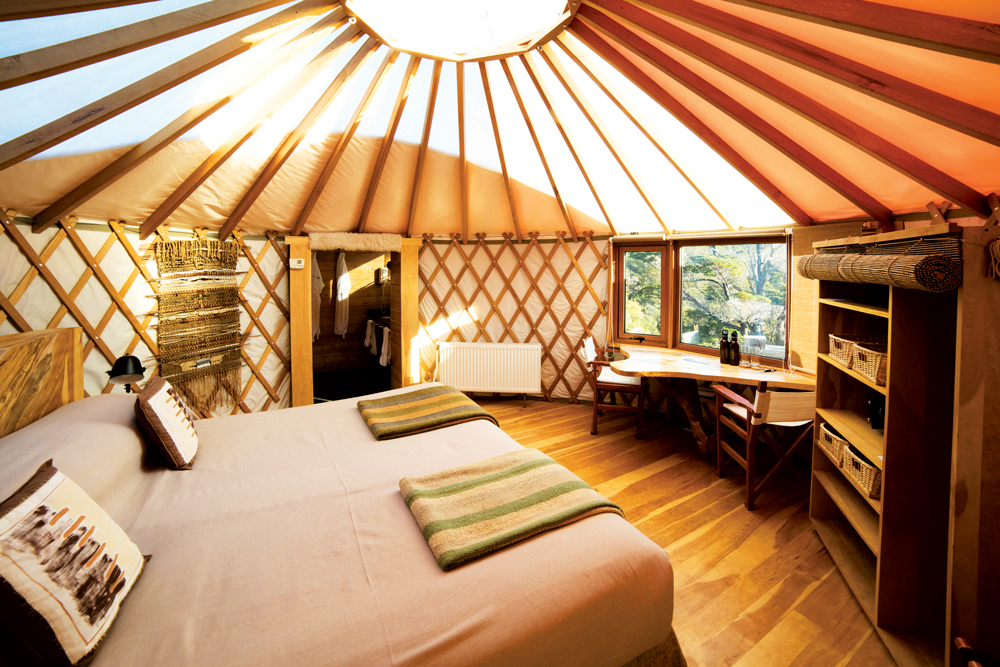
Patagonia Camp is an eco-adventure camp set against the beautiful backdrop of Lake Toro and the Paine massif. The camp has jaw-dropping views. It consists of 18 snug, yurt-like tents, which are dotted around a forest and which blend in with the trees. The tents pull off the trick of giving visitors privacy, while exposing them to the majesty of nature. Each tent has its own terrace, where you can wrap yourself in a blanket, sit back, watch the sunset and then watch the stars as they come out at night in numbers you could never hope to count.
Inside, the tents are fitted out simply, without any pretence of extravagance, yet contain everything a visitor needs for an exceptionally comfortable stay. Anyway, no visitor to Patagonia Camp comes all that way just to sleep the night away and then spend the day hanging around in a tent.
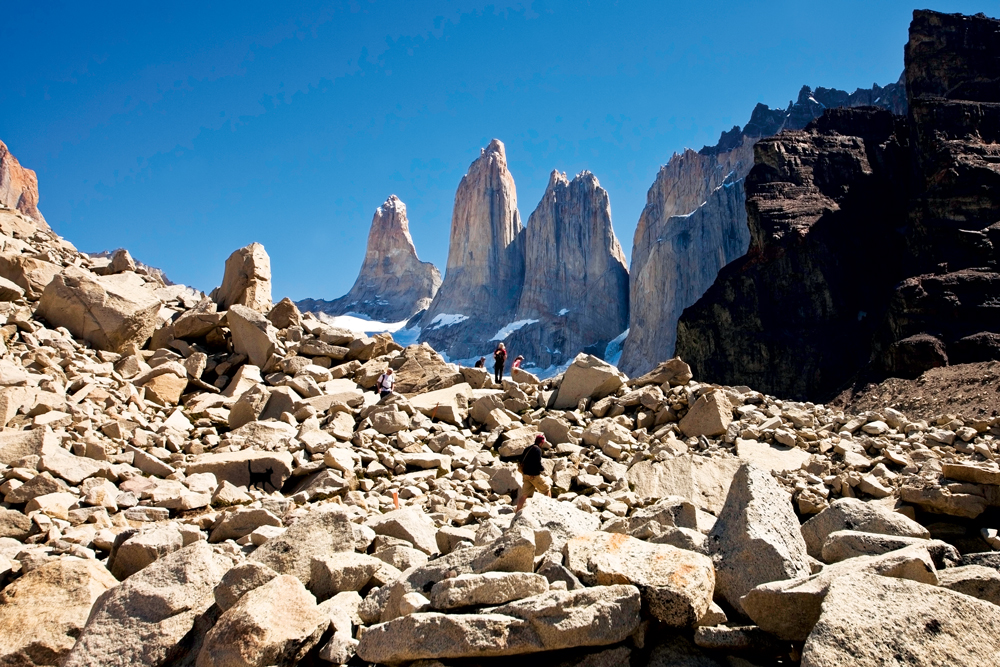
The service at the camp is impeccable. The staff know their jobs inside out and are always happy to chat about their knowledge of the area and their experiences there. The range of food and wine offered is wide. Most of the food is grown locally, and it is prepared deliciously. So it should be, because the excursions the visitors take require hearty nourishment before, during and after.
What makes Patagonia Camp special is the thought behind it. It is founded on the basis of respect for the place it is situated in. The camp sets out to educate visitors about the need to protect the environment. The architecture of the camp reflects the care taken in designing it to ensure it does as little harm as possible to the surrounding area. Special measures are taken to deal with the waste it generates. At Patagonia Camp, the concept of eco-tourism has been well thought through and then put into action beautifully. This can be seen in the briefing on the environment given to visitors when they arrive, in the depth of knowledge of the area that the staff show when taking visitors on excursions, and in the hand-crafted and sustainably produced contents of the tents.
In the summer, visitors can take excursions on horseback, on bicycle or on foot. They can take to the water in kayaks, or go fishing. The Torres del Paine National Park has many trails of various degrees of difficulty, so there are trails suitable for very kind of hiker. One of the easier treks takes about three hours. It shows the hiker the wildlife in the area, including foxes, guanacos and condors. If you are extremely lucky, you will see a puma. The trek also takes the hiker to see cave paintings 6,000 years old.
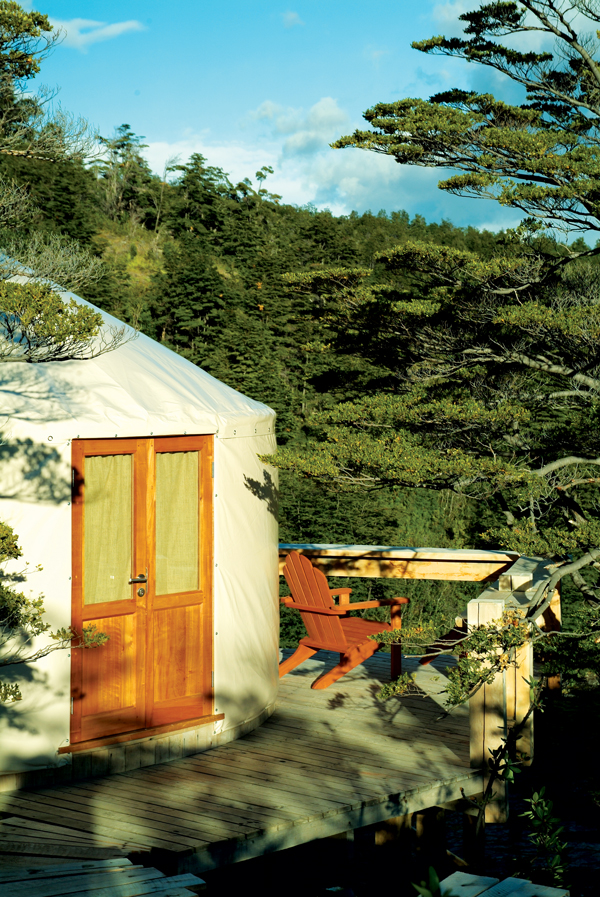
A much more demanding trek gives the hiker an up-close view of the Torres del Paine mountains, and the scenery at every stage is magnificent. The trek is about 25km from start to finish and can take up to 10 hours to complete. The trail climbs 880 metres, and the ascent is, to say the least, invigorating. When, at last, I reached the base of the Torres del Paine, my guide punningly translated the name of the mountains as “the towers of pain”. The reward for suffering on the climb is a great sense of achievement, and the chance to enjoy a great lunch spot and the opportunity for a power nap. On the descent, the ache in your knees is soon banished from your mind by the knowledge that back at Patagonia Camp some great food and a glass or two of Carménère are awaiting you.
The beauty and tranquillity of Patagonia take your breath away. For the long-suffering city dweller in need of a dose of nature in its purest form, Patagonia is a shot in the arm. Patagonia is also shock treatment for those of us that forget how few places remain in the world that are so little touched by human hand, and how they must be preserved. Patagonia must be preserved at all costs – to reward future travellers for the effort they put into getting there, just as it handsomely rewarded me for the effort I put in.
This article first appeared in the June 2017 issue of #legend magazine





